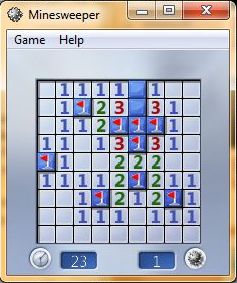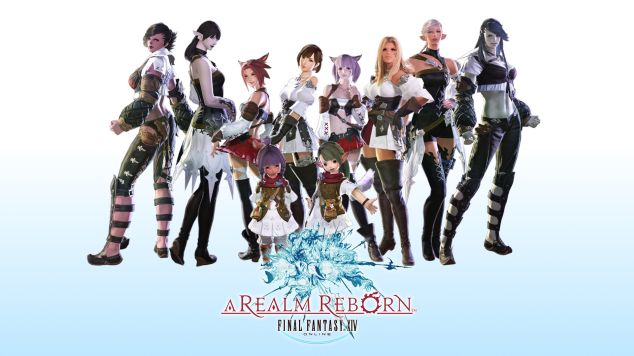Beast Complex, Volume I – The Title Says A Lot

 In the furry fandom, there has always been one problem that has been a little difficult to handle, and that’s trying to figure out where your character’s next meal will come from. In a world where every animal walks upright and can address you as a friend, the issue of food is a bit hard to swallow, if it’s even addressed at all. Are you really going to attack and eat the gazelle who just helped you negotiate a huge contract with?
In the furry fandom, there has always been one problem that has been a little difficult to handle, and that’s trying to figure out where your character’s next meal will come from. In a world where every animal walks upright and can address you as a friend, the issue of food is a bit hard to swallow, if it’s even addressed at all. Are you really going to attack and eat the gazelle who just helped you negotiate a huge contract with?
To be fair, most furry stories don’t bother with this question, or just act like furry society is exactly the same as human society but with 100% more bipedal tigers. Stories like Tempe O’Kun’s Windfall include both feral and bipedal animals, so that suggests to me that steaks might not be hard to come by if Max gets a craving. Meanwhile, fish are a huge part of the Bevy family’s diet, as various scenes throughout the novel suggest.
Of those stories that do depict predation, the results can vary. A frequent setting of the online comic The Suburban Jungle was a bar called the Watering Hole run by Leonard Lion and which had a policy of “no predation allowed”. Carnivores were allowed to eat herbivores wherever they wanted, except in the Watering Hole or in similar establishments, and although this informed a few of the strip’s early stories, after a while it was phased out.
The comic strip Kevin & Kell takes place in a world where, although animals walk on two legs, you really would eat the gazelle who helped you negotiate a huge contract. In fact, it’s expected that carnivores eat herbivores in this universe, to the point where school revolves around teaching carnivores how to hunt. I have to applaud Bill Holbrook for managing to keep the strip going since 1995 and for keeping predation as a major part of the strip’s setting. That said, the strip rarely explores the consequences of predation, and for the most part, the main characters emerge unscathed from whatever conflict may threaten them. This is usually thanks to the half wolf, half rabbit character Coney, who eats any problems her family and their friends might have. Granted, this has unfortunate implications since there’s a storyline that establishes the Kevin & Kell universe is parallel to a human universe where each character has a corresponding human version, but this is one of those comic strips that isn’t really supposed to be taken too seriously. The setting may fall apart if it’s analyzed too much.
In movies, Disney is responsible for two films which explore the complex relationships between carnivores and herbivores. Zootopia takes place at a point in time when carnivores have grown beyond their former instinctual selves and are trying to be better, although coming in contact with the Midnicampum holicithias flower can bring out the savage in any animal. The Lion King takes place at a point in time when animals have developed intelligence but have not risen up on two legs, so to get around the unfortunate implications that a sentient lion is needing to snack on a sentient zebra, the Circle of Life was created to help explain why carnivores need to eat herbivores, and also as a means to appease herbivores with the notion that the lion that eats them today will one day turn into the grass that they eat.
 Then there’s The Lion Guard, which changes the Circle of Life into a general friendship concept (similar to the concept of Friendship from My Little Pony: Friendship is Magic, which eventually develops into a kind of religion with the way it’s treated in later seasons). The Circle of Life apparently means that, although there’s one episode which acknowledges Fuli the cheetah’s need to hunt even though she’s ultimately prevented from hunting by her friends’ constant interruptions, absolutely no protagonist ever eats any of their herbivorous friends, and only Bunga and his uncles Timon & Pumbaa are ever seen eating since they eat bugs and everyone knows that bugs aren’t sentient or deserving of protection, even if they act aware of themselves in the earlier series The Lion King’s Timon & Pumbaa. Plus, any time one of the villains tries to eat someone, they’re chased off since they’re apparently not allowed to hunt in the Pride Lands.
Then there’s The Lion Guard, which changes the Circle of Life into a general friendship concept (similar to the concept of Friendship from My Little Pony: Friendship is Magic, which eventually develops into a kind of religion with the way it’s treated in later seasons). The Circle of Life apparently means that, although there’s one episode which acknowledges Fuli the cheetah’s need to hunt even though she’s ultimately prevented from hunting by her friends’ constant interruptions, absolutely no protagonist ever eats any of their herbivorous friends, and only Bunga and his uncles Timon & Pumbaa are ever seen eating since they eat bugs and everyone knows that bugs aren’t sentient or deserving of protection, even if they act aware of themselves in the earlier series The Lion King’s Timon & Pumbaa. Plus, any time one of the villains tries to eat someone, they’re chased off since they’re apparently not allowed to hunt in the Pride Lands.
I don’t think anyone’s explored the complex relationships between upright carnivores and upright herbivores quite like Paru Itagaki. Whereas I’ve established that most furry media brushes the concept off or treats it like a joke, Paru’s debut manga, Beast Complex, explores the relationships between various characters in a shared setting where carnivores are supposed to be able to co-exist with herbivores, like in Zootopia, but where predator on prey violence keeps happening. It’s almost like the series is set maybe about fifty to a hundred years before Zootopia, or maybe in a different country entirely, where the rules of society are slower to change.
The first four of the original six chapters were published in 2016 before Paru’s breakout success Beastars, with the final two being published in 2017. I like how committed Paru is to the world she’s built, since tiny little details like the black market on page 107 were given much more prominence in Beastars.
Paru also seems very comfortable within the setting of a school, since the first, second and sixth chapters take place in schools. There is definitely something compelling about the point of view of an adolescent coming to terms with his or her place in society, especially an adolescent carnivore. Raul the lion from chapter one tries his best to transcend his savage nature even though he loses his temper at a bat classmate of his when the bat refuses to return to school. Gon, the tiger in chapter two, is much younger and doesn’t understand why there has to be a segregated society, nor why his half of society should pick on the other half, of which his childhood friend Mogu belongs. They both eventually defend an herbivore from a group of carnivore bullies, but the carnivores are barely punished for their actions.

The relationship between carnivores and herbivores in the setting of Beast Complex is, well, complex. With how often attacks happen – there are a few mentioned over the course of the six chapters in volume I, as well the attack during the opening chapter of Beastars, and occasional attacks mentioned during that series – it’s no wonder there’s a tension between the two classes. Not to mention certain characters showing outright distrust, like Luna the gazelle does in chapter five, although the cooking skills of Benny the saltwater crocodile win her over, despite the outright aggressive way he treats her on the cooking show Happy Happy Cooking. There’s also an unnamed vixen in chapter six who is tired of having the expectations of how her species is supposed to act being forced upon her, especially since her fellow vixens are bullies and she wants nothing to do with that.
It’s almost like having segregated schools like in chapter two are contributing to the problem. Gon remains friends with Mogu and the two run off to play together in secret, so he doesn’t fall victim to the othering mentality that the rest of the carnivores feel towards herbivores. It’s very easy to think of herbivores as less than human when they’re separated from you in their own dorm, and can very easily remind an American audience of our own history of segregation, whether it’s black children in schools or natives on reservations, or a South African audience of apartheid.
Paru is great at showing the diverse characters of her world, and letting us know that not every member of a species acts the same way. Whereas with an allegorical tale, a character would be a lion in order to define their nobility, a fox to define their cunning, and so on – kind of like Disney’s version of Robin Hood or a number of other animal fables – Beast Complex uses the diversity of species to define the world. Many smaller species, like Azmo the bat and Luna the gazelle must live with the reality that they could be attacked and killed for food, since society is not so far removed from the savage days of history’s past that they’re not still at risk. The black market for meat is proof of that. Characters like Raul the lion put a lot of work into trying to live up to the standards of his species. The tiger that eats a zebra at the beginning of chapter three is definitely not the same as the tiger from chapter two who just wants everyone to get along.
I think my favourite chapter from this volume has to be chapter three, which uses the setting of the series to explore a romantic relationship between Garom the camel and Abby the wolf both literally and metaphorically. Abby is a metaphorical maneater in how she seduces him, and it’s even suggested she takes him away from other women by removing his ability to wear a wedding wing (in other words, she quite literally eats his ring finger, making her a literal maneater as well). Since the encounter, he’s carried a torch for her, unable to think about other women, so her dominance over him is total and complete; she really does take him away from other women.
But all six chapters are very good, and I’m willing to bet that a lot of people will enjoy the antagonistic banter of chapter five, as well as the expert way Paru draws the characters’ expressions. I’m also pleased to say that they’re not the only chapters we’re ever going to have. Paru must’ve known I was planning a “stand alone Beast Complex” joke because a seventh chapter was published in 2019 and then starting with chapter eight earlier this year, this has become Paru’s follow-up series now that she’s finished with Beastars, making this the first volume and no longer the only volume. One of the chapters even stars Haru and Legosi as they explore their relationship. Paru’s definitely not done telling stories about her animal characters and I’m definitely not done reading those stories.

Author’s note: all images except the banner and cover art are from an unofficial fan translation; review is based on the official translation released by Viz Media





